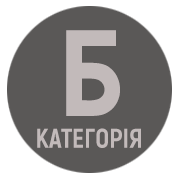Alternative methods of teaching foreign languages
DOI:
https://doi.org/10.32782/2617-3921.2024.26.284-293Keywords:
studying technologies, alternative methods, foreign language, communicative ability, teaching methodsAbstract
The article deals with the peculiarities of the use of alternative methods of teaching a foreign language. Such technologies of training help students to develop necessary skills, increase interest in educational material, allow to make educational process more effective and individualized. The use of alternative methods in the study of a foreign language consists in application in the classroom various interactive learning tools: business games, multimedia lessons, internet communication technologies etc. In the context of language teaching, the overarching objective is to cultivate the requisite communication abilities. Alternative methods promote the solution of problems of communicative character, helps to teach students to self-discipline and successful cooperation with each other, to work in team. The main advantages of such methods is overcoming of communicative barriers, hat often occurs when students study a foreign language. Alternative teaching methods include a method of complete physical reactions, suggestive method , drama-pedagogical teaching, silent and group method. Suggestive method of learning a foreign language is based on the selective lexical material commonly used in basic vocabulary. The main idea of drama-pedagogical method is that a foreign language teacher can borrow much for his professional practice from the art and actors. The method of complete physical reaction is based on concerted action and speech, speech training through physical (motor) activity. The main advantage of "silent" method is to improve oral communication skills, overcoming fear of linguistic accuracy and correctness of teaching ideas. "Group method" – basic principles of training were borrowed from the field of customer relations with consultant: They focused on a combination of cognitive and emotional learning processes.
References
Власова О. І. Педагогічна психологія. Київ : Либідь, 2005. 400 c.
Грузинська І. О. Методика викладання англійської мови в середній школі. К.: Радянська школа, 1948. 196 с.
Коваленко О. Концептуальні зміни у викладанні іноземних мов у контексті трансформації іншомовної освіти. Іноземні мови в навчальних закладах. Випуск 2, 2003. С. 20-24.
Нiколаєва С.Ю. Методика навчання iноземних мов у середнiх навчальних закладах. К.: Ленвiт, 2002. 320 с.
Новікова Т.О. Метод повної фізичної реакції як один із ефективних методів формування іншомовної компетенції молодших школярів: http://nauka.zinet.info/25/novikova.php (дата звернення 29.05.2024).
Пальчевський С.С. Сугестопедагогіка. Рівне: Редакційно-видавничий відділ Рівненського державного гуманітарного університету, 2002. 394 с.
Brewster J., Ellis G., Girard D. The Primary English Teacher’s Guide. Penguin Books Ltd. 1992. P. 16-26.
Fabian M. et al. The Process of Teaching a Foreign Language with the Use of Social Internet Applications. Systematic Reviews in Pharmacy, Vol. 11, Issue 10, 2020. P. 156-159.
Fabian M. et al. Pedagogical Aspects of Improving Communication Skills of University Students. Journal of Lifestyle &SDG’S Review.Vol. 4, 2024. P. 1-9.
Phillips Sarah. Drama with Children . Oxford: University Press, 1999. 154 р.



